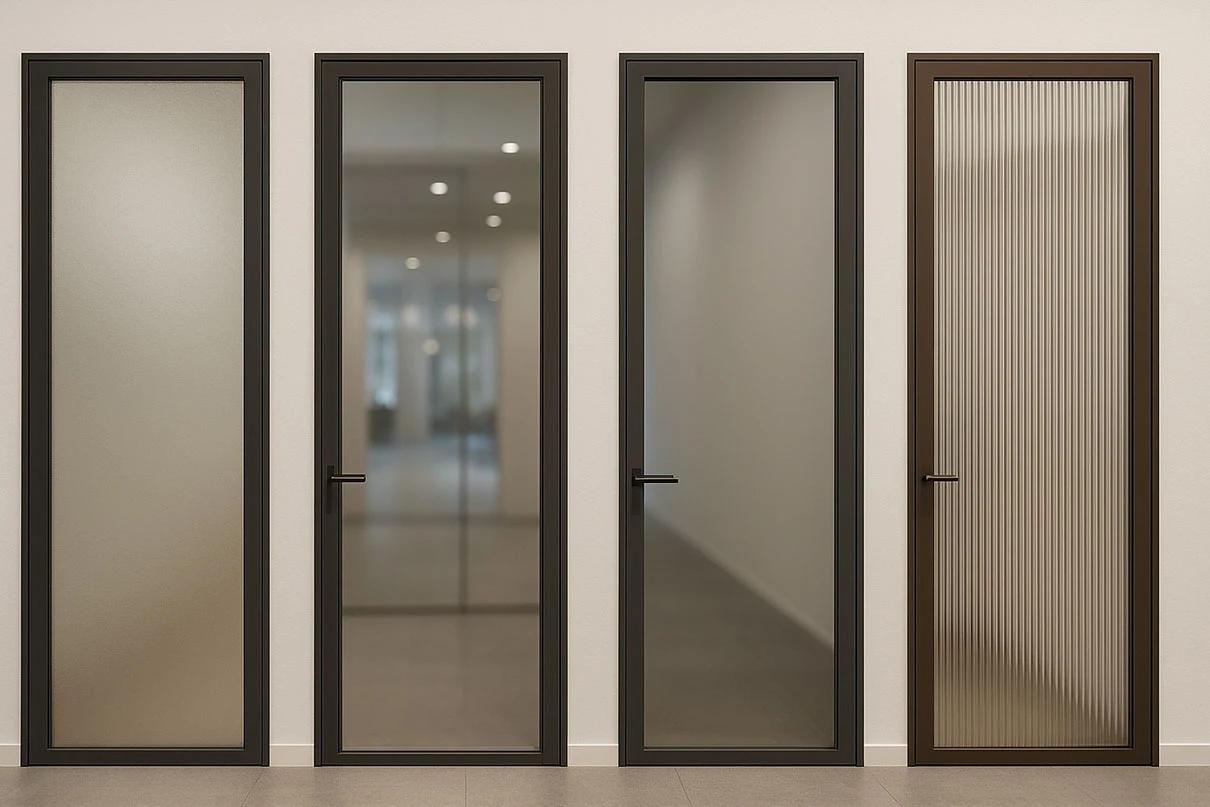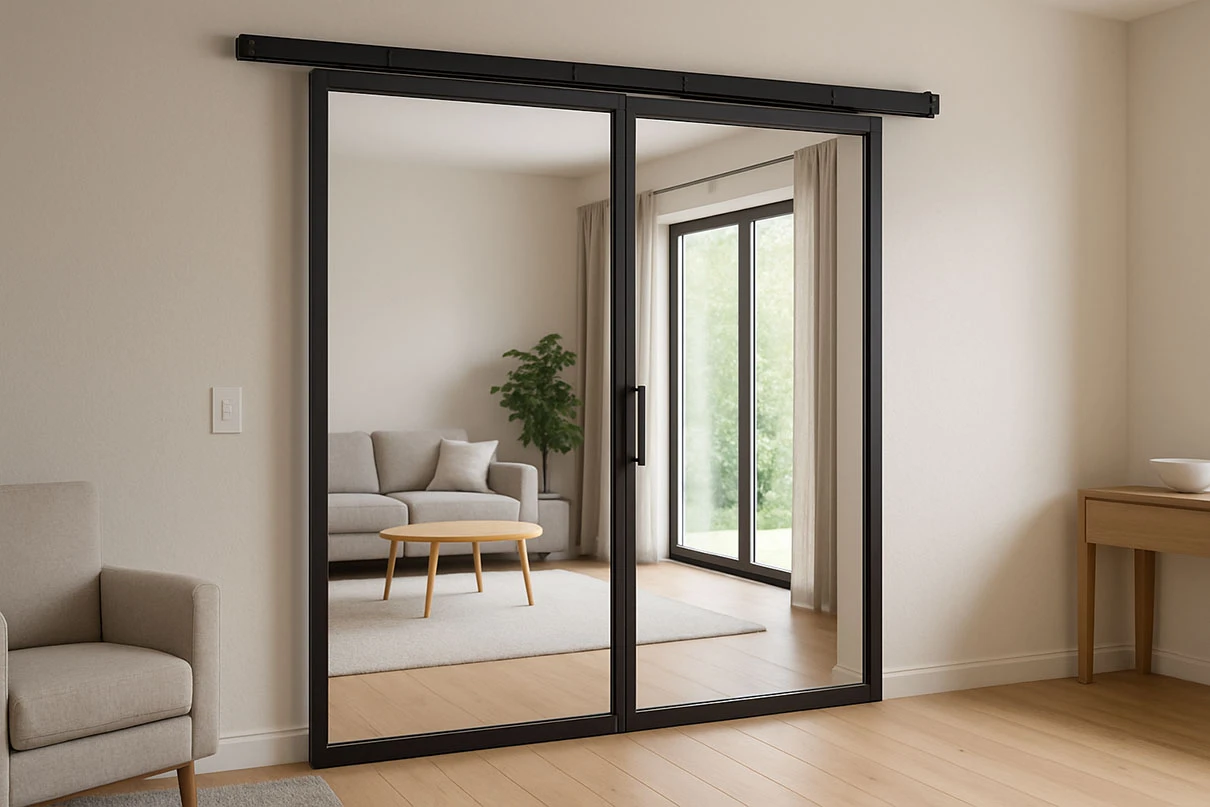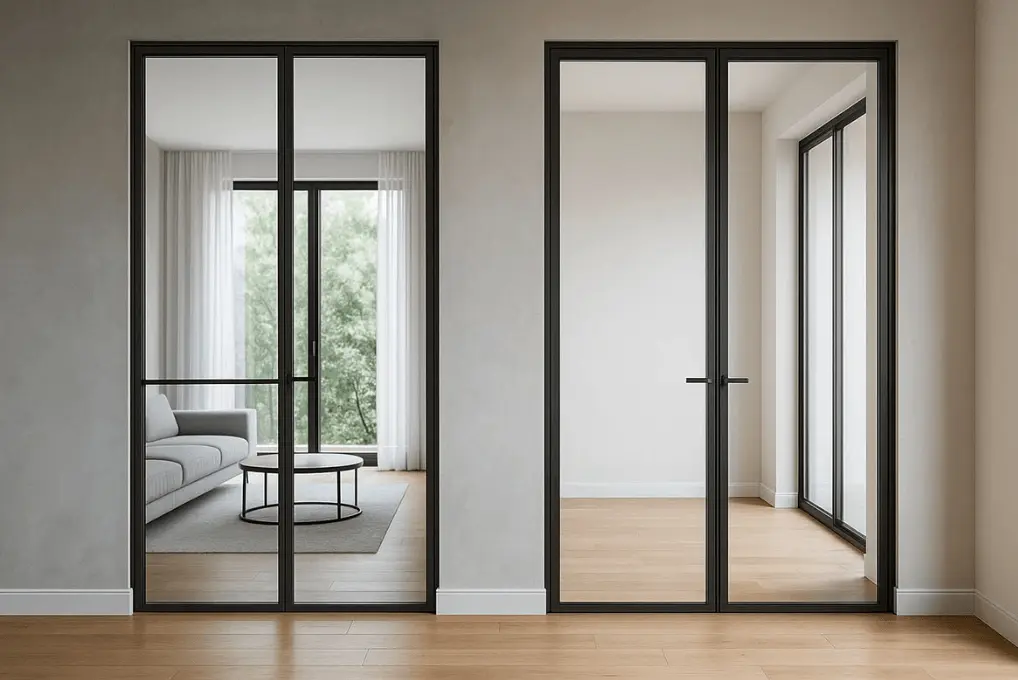Every square inch matters when you’re designing a small space. Whether it’s a cozy apartment, a narrow hallway, or a compact guest room, choosing the right interior doors can make the difference between feeling confined and feeling at home. Discovering smart, beautiful, and space-saving door solutions can elevate the flow of your living environment.

If you’re looking for high-quality, stylish, and space-efficient doors, explore the full collection of Interior Doors in Florida – where modern design meets compact living.
“The door you choose doesn’t just separate rooms – it shapes the feeling of your entire space.”
Why small spaces need smart door solutions
When living in a limited area, even the simplest decisions — like which door to install — can have a dramatic impact. Traditional swing doors that open into the room may feel intrusive or block furniture arrangements. This is especially noticeable in urban apartments or older homes where floor plans are tight and wall space is at a premium.
Choosing an interior door that complements your compact layout is not just a matter of aesthetics, but of functionality. A thoughtfully selected door allows you to move freely, decorate without obstruction, and even enhance the visual spaciousness of the room.
- Seamless transitions between rooms
- Better functionality in tight layouts
- A sense of openness and light
- Modern style without the clutter
“In a small space, every element must pull double duty — form and function must live in perfect balance.”
A smart interior door becomes an architectural ally, not a hindrance. It should help guide movement, reflect light, and support your overall design theme — without drawing unnecessary attention to itself.
Sliding doors
Among all interior door types, sliding doors reign supreme in small spaces. They don’t require any swing clearance, allowing furniture to sit closer to walls and giving you more layout flexibility. Whether installed as barn doors on external tracks or pocket doors that vanish inside the wall, their design reduces clutter and increases flow.
Popular options include
- Barn doors – rustic charm with a space-saving twist
- Pocket doors – disappear completely into the wall
- Glass panel sliders – let the light flow from room to room
“Sliding doors aren’t just a trend – they’re a timeless solution for modern life.”
Sliding doors also lend themselves to creativity. With finishes ranging from natural wood to high-gloss lacquer, and panels in matte, mirrored, or frosted glass, they become a design statement while enhancing spatial efficiency.
Installing a sliding door can change the way a space breathes. In small apartments, they can divide rooms without visually closing them off. In narrow bathrooms or closets, they offer functionality without bulk. Their silent glide and minimalist appeal make them a favorite among architects and interior designers alike.

Bi-fold doors
Bi-fold doors offer a clever balance between compactness and accessibility. These doors fold like an accordion, making them ideal for spaces where a full-swinging door is not an option, but a fully recessed pocket door isn’t feasible either. They bring a smooth, efficient, and slightly modern touch to otherwise overlooked areas.
They are perfect for
- Laundry nooks
- Small wardrobes
- Pantries
- Utility closets
With modern hardware and contemporary materials, today’s bi-fold doors can look elegant and refined. Wooden louvers, glossy laminates, or even mirrored surfaces add to the décor while performing a practical role.
“Form meets function with every fold — bi-fold doors are the quiet multitaskers of small interiors.”
In addition to being functional, bi-fold doors allow you to access the full width of a closet or cupboard, unlike single-panel swing doors. Their compact design frees up floor space, and many models now come with soft-close mechanisms for smooth, silent operation.
If you’re aiming for subtle sophistication in a small area, bi-fold doors might just be the best-kept secret in interior architecture.
Glass doors
One of the most effective design tricks in small spaces is to maximize natural light. Glass interior doors are a powerful tool in this mission. They don’t block light like solid doors do, and with frosted, ribbed, or patterned glass, they still provide the necessary privacy.
They work well in
- Home offices
- Bathrooms
- Hallways
- Between living and dining areas
“Let the light in. The right glass door transforms even the tightest corner into a glowing haven.”
By allowing light to pass through, glass doors break down the visual barriers between rooms. They create a more fluid, open atmosphere and visually enlarge your space. Use them to separate a home office from the living room without making either feel closed off.
Glass doors also come in many styles — framed or frameless, tinted or clear, sliding or hinged — allowing for complete customization. If sound insulation is a concern, double-glazed panels can help without sacrificing transparency.

For those who want the best of both worlds — privacy and openness — interior glass doors are the go-to choice.
Swing doors with a twist
Swing doors have long been the standard in homes, but they can be adapted to small spaces with a few clever modifications. Narrow doors, double swing hinges, or even reverse opening directions can dramatically improve functionality in tight quarters.
To make swing doors more compact-friendly
- Use slimline handles
- Opt for outward or double-swing hinges
- Choose lighter tones to reflect light
- Consider vertical paneling for height illusion
Narrow swing doors can look especially elegant when matched with minimalist hardware and clean lines. They provide a tactile, familiar feel without compromising square footage.
“Elegance isn’t about abundance — it’s about proportion. Even a simple swing door can exude grace when designed with intent.”
In spaces like powder rooms, storage nooks, or closets, a narrow swing door with the right design can feel bespoke. Choose designs with flush panels, soft matte finishes, or metallic details to keep the look current and cohesive with your décor.
Color and finish
Design doesn’t end with the door’s shape — its color and finish play a vital role in how the space feels. Lighter shades reflect light and help open up the room visually. Textures can also enhance the perception of space, giving depth to flat surfaces.
Most popular finishes for small areas include
- Matte white for seamless integration
- Warm gray for soft contrast
- Woodgrain for natural comfort
- High-gloss lacquer for a luxury feel
“A well-chosen finish doesn’t just decorate — it defines the space.”
Match your door finish with nearby moldings, floors, or furniture to create harmony. A door that blends into the wall can make a room feel larger, while a contrasting accent door can draw the eye and add personality.
In minimalist interiors, consider invisible doors — panels designed to be flush with the wall and painted the same color. They add a futuristic and ultra-clean look that works beautifully in tight modern apartments or studios.
Tips for choosing the best door for a compact room
It’s easy to overlook the door when designing a small room, but it’s often the one element that changes how the entire space operates. The right choice can unlock potential you didn’t even know you had.
Keep in mind
- Measure everything – not just width and height, but clearance and furniture placement
- Choose functionality first – sliding, folding, or swinging? What works best with your layout?
- Stick to your style – minimalist, industrial, classic, or Scandinavian? Let the door echo your design voice
- Don’t ignore the hardware – slim, modern handles and invisible hinges make all the difference
“The best door blends form, function, and emotion. It welcomes, protects, and inspires — all in one frame.”
Also consider the material — solid wood, engineered wood, glass, or aluminum — and its weight, which can affect ease of use. If noise reduction is important, go for denser cores. If style takes priority, don’t be afraid to go bold with texture or contrast.
A good interior door enhances not only your space, but also your lifestyle.

